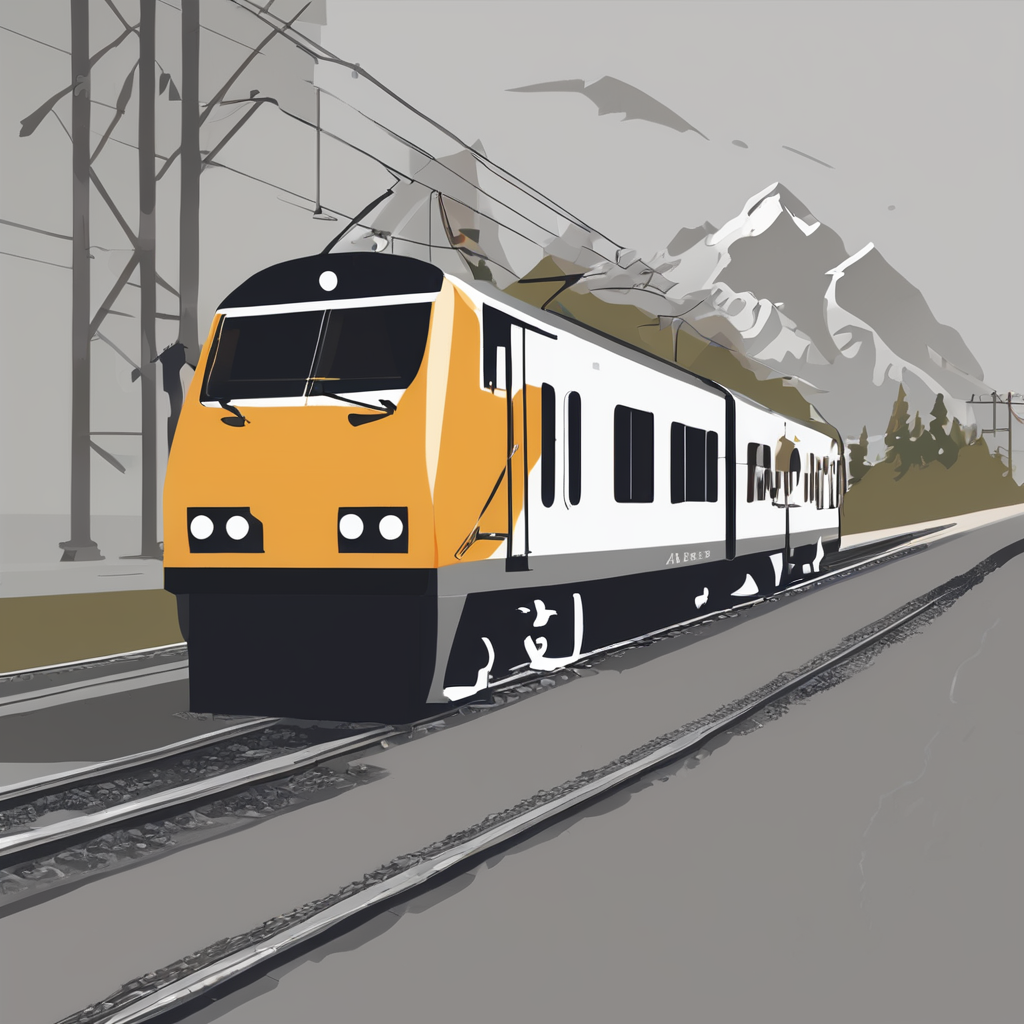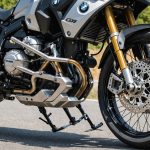Mastering Drift: A Complete Guide to Safely and Legally Tuning Your UK Car for Maximum Drift Performance
Understanding Drifting: The Basics and Beyond
Drifting, a driving technique that involves intentionally oversteering while maintaining control, has become a thrilling and popular form of motorsport. Originating on the mountain roads of Japan in the early 1990s, drifting has evolved into a global phenomenon, captivating drivers and spectators alike with its unique blend of speed, skill, and style.
To get started, it’s crucial to understand the fundamental principles of drifting. Drifting involves using the throttle, brakes, clutch, and steering to keep the car in a state of oversteer, where the rear wheels lose traction and the car slides sideways. This requires a high level of car control and coordination, as drivers must balance the amount of countersteer with the modulation of the throttle and brakes to maintain the slide while adhering to the racing lines or designated “clipping points”[3][5].
Also to read : Experience the elegance of prestige driver services in belgium
Essential Modifications for Drift Cars
Before you can start drifting, your car needs to be properly modified to handle the demands of this driving technique. Here are some key modifications to consider:
Drivetrain
A mechanical limited slip differential (LSD) is essential for drifting. The preferred type is the clutch-type LSD in “two-way” form, which provides consistent and aggressive lockup behavior under both acceleration and deceleration. Other options include helical torque-sensing differentials like the Torsen or Quaife, which are also adequate but less common in drift cars[5].
Have you seen this : Step-by-Step Guide: Installing a Heads-Up Display (HUD) in Your UK Vehicle
Gear Ratios
Changing the final gear ratio can significantly impact your drift performance. Closer ratios help keep the engine in the power band, especially on tracks with tight corners. Some drifters opt for four-gear transmissions with more open-ratio gears, similar to those used in NASCAR, to reduce the number of shifts during a run[5].
Steering and Suspension
Steering angles are critical in drifting. Modifications such as modified steering knuckles or uprights and extended control arms can allow for higher steering angles. Full lock kits that adjust the vehicle’s original scrub radius, kingpin axis, Ackermann angle, and other kinematics are also essential to maximize front grip and eliminate mechanical bind at high steering angles[5].
Suspension Tuning
A stiff suspension is necessary to reduce body roll and maintain stability during slides. Springs and shock absorbers are tuned based on the track layout and the driver’s skill level. However, it’s important to note that Ackermann geometry, while helpful for turning, can inhibit the ability to slide sideways at full lock[5].
Safety First: Preparing Your Car and Yourself
Safety is paramount when it comes to drifting. Here are some key considerations to ensure your safety and the safety of others:
Vehicle Safety Checks
Before modifying your car, make sure it is in good condition. Regularly check the brakes, tires, and suspension to ensure they can handle the stresses of drifting. Always use high-quality aftermarket parts that are designed for drifting[5].
Driver Safety Gear
Invest in proper safety gear, including a helmet, HANS device, and a fire suit. These are essential for protecting you in case of an accident.
Track Safety
Always drift on a designated track or a safe, closed course. Never drift on public roads, as it is illegal and highly dangerous. Make sure the track is well-maintained and has adequate safety features such as run-off areas and barriers.
Customizing Your Car for Drift Performance
Customization is a crucial aspect of drifting, allowing you to tailor your car to your driving style and the specific demands of the track.
Throttle Response Controllers
Tools like the Pedal Commander throttle response controller can significantly enhance your driving experience. This device connects to your vehicle’s electronic throttle control system, removing throttle delay and offering customizable driving modes. With four preset modes (Eco, City, Sport, and Sport+) and nine sub-settings each, you can fine-tune your throttle response to match any driving scenario, from calm highway drives to high-performance track events[1].
Table: Comparison of Drift Car Modifications
| Modification | Description | Importance in Drifting |
|---|---|---|
| Mechanical LSD | Ensures consistent traction and control during slides | High |
| Gear Ratio Changes | Keeps the engine in the power band and reduces shifts | Medium |
| Steering Angle Mods | Allows for higher steering angles and better control | High |
| Suspension Tuning | Reduces body roll and maintains stability | High |
| Throttle Response Ctrl | Enhances throttle sensitivity and responsiveness | Medium |
| Safety Gear | Protects the driver in case of an accident | High |
Driving Techniques for Mastering Drift
Mastering the art of drifting requires a combination of skill, practice, and the right driving techniques.
Observing and Planning
Good observation and planning skills are essential. Keep a safe distance from the car ahead to see what’s coming up on the road and plan your moves accordingly. This skill is not just useful for drifting but also for everyday driving, as it helps in maintaining a smooth flow of traffic and improving fuel economy[2].
Car Sympathy
Develop a sympathetic relationship with your car. Use smooth steering inputs, gentle braking, and seamless gear changes. Allow your car to warm up thoroughly before pushing it hard, and make sure all parts of the drivetrain are up to temperature[2].
Countersteer and Throttle Control
The key to drifting is mastering the countersteer and throttle control. As you enter a turn, intentionally oversteer by applying the throttle and then countersteer by turning the wheels in the direction of the slide. Modulate the throttle to balance the car and maintain the slide. Too little throttle and the car will lose momentum; too much and it will spin out[3][5].
Legal and Safe Drifting in the UK
Drifting in the UK must be done legally and safely to avoid any legal repercussions and ensure the safety of all involved.
Designated Tracks
Always drift on designated tracks or closed courses. Events like the Modified Live at Snetterton and the British Drift Championship provide safe and legal environments for drifting enthusiasts to showcase their skills[4].
Compliance with Regulations
Make sure your car complies with all relevant regulations and safety standards. This includes having the necessary safety gear and ensuring your car is in good working condition.
Community and Resources
Joining a community of like-minded enthusiasts can be incredibly beneficial for your drifting journey.
Stance Auto Magazine
Resources like Stance Auto Magazine offer in-depth features, expert insights, and updates on the latest events and techniques. Joining such communities can help you stay informed and connected with other drifters[3].
Social Media and Forums
Follow drifting communities on social media platforms like Facebook and Twitter, and participate in online forums to learn from others, share your experiences, and get tips on modifications and driving techniques.: Your Journey to Mastering Drift
Mastering the art of drifting is a rewarding and challenging journey that requires dedication, practice, and the right knowledge. By understanding the basics of drifting, modifying your car correctly, focusing on safety, and honing your driving techniques, you can enhance your performance and enjoy this exhilarating sport to the fullest.
As you embark on this journey, remember to always prioritize your safety and the safety of others. Drifting is not just about speed and style; it’s about control, finesse, and a deep connection with your vehicle.
Practical Insights and Actionable Advice
- Start with the Basics: Before diving into advanced modifications, make sure you have a good understanding of the fundamental principles of drifting.
- Practice Regularly: Consistent practice is key to improving your skills. Start with slow speeds and gradually increase as you become more comfortable.
- Join a Community: Connecting with other drifters can provide valuable insights, tips, and support.
- Stay Safe: Always prioritize safety by using proper safety gear, driving on designated tracks, and ensuring your car is in good condition.
By following these guidelines and staying committed to your craft, you’ll be well on your way to mastering the art of drifting and enjoying the thrill of this unique and exciting sport.
Overview of Drifting and its Popularity in the UK
Drifting, a driving technique where the driver intentionally oversteers, has gained monumental significance in car cultures worldwide, especially in the UK. Initially surfacing in Japan, drifting swiftly captivated enthusiasts globally and found a fervent following in the UK due to its thrilling nature and the skill required. This motorsport exudes a unique charm that seamlessly blends technical ability with artistic flair — a quintessential part of drift culture.
The UK has witnessed an explosive growth in drifting events and competitions, from informal meet-ups on isolated tracks to official circuits hosting national championships. Local tracks have adapted to accommodate this growing interest, reflecting a vibrant shift towards car tuning to enhance performance specifically suited for drifting. In essence, car tuning allows for the customisation of vehicles, maximising their potential to drift smoothly and control effectively through tight corners.
Beyond the adrenaline rush, drifting presents a close-knit community, offering inclusivity and collective passion for the sport. Enthusiasts convene in various online platforms and at events, sharing knowledge, tips, and experiences. This community engagement is pivotal, fostering a supportive environment where novices and veterans alike contribute to the shared love of drifting. Together, these aspects underscore why drifting continues to soar in popularity across the UK.
Legal Regulations for Drifting in the UK
Navigating the UK vehicle regulations concerning drifting requires a nuanced understanding of automotive legalities. These regulations play a pivotal role in setting boundaries for car modifications, which are essential for making a vehicle drift-ready. Modifications such as altering suspension or fitting specialised tyres must comply with UK laws to ensure they remain road-legal and meets safety standards.
Drifting legality extends beyond just vehicle modifications; it encompasses the legal venue for the activity. Motorsport laws guide enthusiasts to use sanctioned events and locations, ensuring not only legal compliance but also safety for participants and spectators. Motorsport venues provide a controlled environment, which significantly reduces the risks associated with drifting on public roads.
Understanding insurance implications is crucial when modifying vehicles for drifting. Many standard insurance policies won’t cover damages or liabilities incurred during drifting activities, especially if modifications aren’t declared. This requires engaging with insurers that specialise in covering motorsport activities and modified vehicles.
Motorsport venues often have their own regulations that drivers must adhere to, including safety gear requirements and vehicle inspections. Such regulations are designed to maintain high safety standards, allowing enthusiasts to focus on honing their skills in an environment that adheres to legal stipulations. This alignment ensures that drifting remains a thrilling yet regulated motorsport within the UK.
Safety Considerations When Drifting
Drifting, while thrilling, necessitates a strong focus on safety. Implementing effective car safety modifications is vital to protect both the driver and vehicle.
Essential Safety Gear: Drivers should always equip themselves with a high-quality helmet, which offers critical protection. Pair it with fire-resistant racing suits, gloves, and shoes to minimize injury risks. A HANS device, or similar neck restraint system, is recommended to prevent neck injuries.
Car Safety Modifications: Installing a robust roll cage is a crucial step in ensuring structural integrity during a drift. This cage acts as a protective barrier, enhancing the car’s durability in the event of a rollover or collision. Additionally, upgrade to racing seats and harnesses to boost driver stability and control.
Focus on Driving Techniques: Prioritize maintaining situational awareness at all times. A clear understanding of the surrounding environment, along with proficient use of mirrors, supports safe maneuvering. Practice maintaining speed and angle control, essential for both successful drifting and ensuring drift safety.
Best Practices: Practice in controlled environments under professional supervision whenever possible. Regularly check and maintain all safety equipment and vehicle modifications, ensuring they function optimally. Adhering to these guidelines enhances the overall safety of the drifting experience, paving the way for both enjoyment and proficiency in this dynamic sport.
Key Modifications for Enhanced Drift Performance
When it comes to mastering the art of drifting, the right drift car modifications are paramount. Achieving the perfect slide isn’t just about skill; it’s about having a vehicle tuned to support such dynamic maneuvers.
Suspension Adjustments
Adjustable suspensions are a crucial element in tuning techniques for drifters. The ability to tweak the suspension allows for tailored handling, catering to differing track conditions and personal preferences. Ideally, one should aim for setups that decrease body roll and improve stability. Professional drifters often recommend brands like TEIN and KW, known for their high-quality performance upgrades.
Engine Tuning
Boosting a drift car’s performance starts under the hood. The balance between horsepower and torque is vital. While horsepower is essential for speed, a high torque provides the necessary power for maintaining a drift. Common engine modifications include installing turbochargers or superchargers, which considerably enhance the vehicle’s drift capabilities.
Tires and Wheels
Selecting the right tires is fundamental for optimum drifting performances. Wider tires with a softer compound can offer better grip, while lightweight wheels reduce unsprung mass, improving handling. Regular maintenance, such as checking tire pressures and alignment, ensures tires maximize their drift car modifications potential.
Incorporating these elements can significantly augment a vehicle’s drift abilities, making every slide smoother and more controlled.
Step-by-Step Guide to Tuning Your Car for Drifting
Before embarking on drifting car tuning, it’s essential to evaluate the car’s suitability for the sport. A stable weight distribution, rear-wheel drive, and a powerful engine are pivotal. Each vehicle is unique, so understanding its baseline characteristics will guide you in making efficient modifications.
To begin the tuning process, start with suspension adjustments. Lowering the car’s centre of gravity enhances stability during drifts. Opt for adjustable coilovers, which allow precise control over ride height and damping. Don’t forget to optimise camber and toe settings to improve grip.
Next, focus on enhancing the engine’s performance. Upgraded air intakes, exhaust systems, and turbochargers can significantly boost power output. A remapped ECU further enhances performance by adjusting fuel and timing parameters, ensuring efficient engine operation under high-stress conditions.
The tuning process isn’t complete without testing and fine-tuning. Regular testing on closed tracks or drift courses is essential. Observe the car’s handling and make adjustments as necessary. Fine-tuning involves iterative modifications to suspension, tire pressure, and power delivery strategies until the desired drift performance is achieved.
Remember, each modification influences your setup, necessitating adjustments elsewhere. This comprehensive, sequential approach ensures a balanced and effective drifting vehicle.
Resources for Drifting in the UK
When looking for drift resources in the UK, tapping into online communities can be incredibly valuable. These platforms provide not only technical advice but also an opportunity to connect with fellow enthusiasts. Some of the most popular UK drifting communities include Driftworks and the British Drift Championship forums. These spaces offer discussions on a wide range of topics, from vehicle setups to local events.
Participating in online forums gives you the chance to ask questions, share experiences, and gain insights from seasoned drifters. Such platforms often feature sections dedicated to car tuning, technique tips, and advice on how to break into the competitive scene. It’s a treasure trove for those keen on enhancing their knowledge of drifting.
If you’re seeking more structured information, there are numerous recommended resources out there for further reading. Books like “Drift: The Techniques” and various articles available on motorsport websites provide a deeper understanding of the art of drifting and car tuning tactics.
Moreover, staying updated on drifting events across the UK is essential. Websites and community pages regularly announce upcoming meets and competitions, helping you plan visits or participation. Such events are perfect for both observing experienced drifters and practicing your skills in a safe environment.










